
Porsche Taycan Saloon Review (2024)

Introduction
When the Toyota Prius was launched as the first mass-produced hybrid vehicle, critics scoffed, saying it’d never catch on.
Fast forward two decades, and we're approaching the other end of the electrification transformation – an all-electric mass-produced supercar.
Let's face it, such a vehicle was something traditional petrolheads never wanted to contemplate.
But German automotive giant Porsche has demonstrated it’s got the muscle, the tech and the know-how to prove everyone wrong.
Yes, there are a handful of examples, but they’re mainly limited-in-number hypercars, which cost north of a million in most cases.
The Taycan isn't really a supercar as such. Still, it's about the closest we can get just now without spending seven figures – and proves that a genuinely electric supercar is perfectly doable by a traditional, mainstream manufacturer.
Regardless of whether you regard the Taycan as a supercar, it can outrun almost every petrol supercar that's ever existed in its fastest spec.
It has already been around for five years, unveiled at the Frankfurt Motor Show in 2019, and a brand new facelifted version arrives in the Spring in 2024. Before that one arrives, let's look at the existing model.
Select's rating score* - 4.5 / 5
At a Glance
The Taycan is gorgeous to look at – and, in case you were wondering, it has the typical Porsche shape.
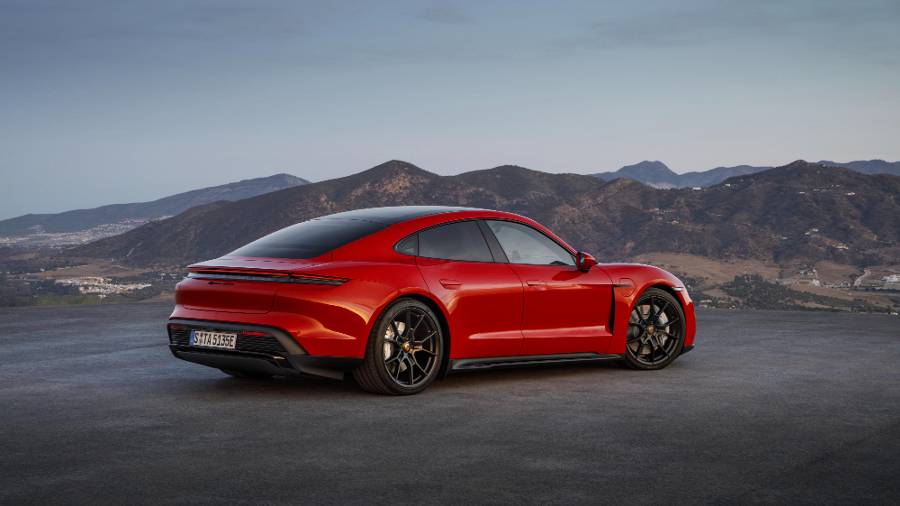
In fact, from some angles, you'd be hard pushed to realise it isn't a 911, although the four side doors and the slightly elongated body are the main giveaways.
The front end features the traditional bonnet, which sweeps downwards towards the front, along with the unmistakable rounded bumpers and modestly humped headlight housings.
There are tear-like air intakes beneath the headlights, which detract from an otherwise clean design, while the grille (if you can call it that) sits thinly beneath the number plate.
Around the side, the classic Porsche shape becomes even clearer, with the dramatic angle of the back window, while the creases help to bring out the wheel arches.
The rear arguably looks more Panamera-shaped than the 911 and features a black strip running along the width of the boot, linking the taillights on either side.
It is a beautiful car – but does its all-electric, engineless nature prevent it from being a proper Porsche? That is what we’re aiming to find out.
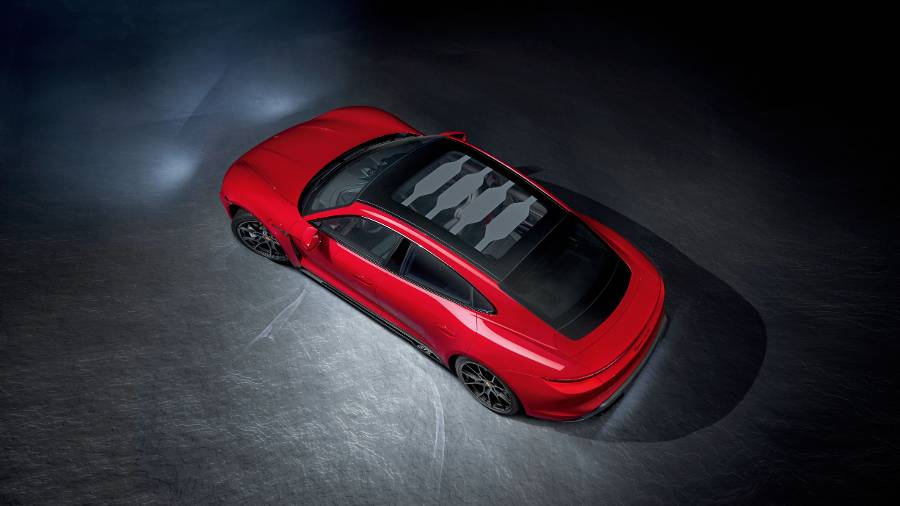
Key Features
There are several versions of the Taycan.
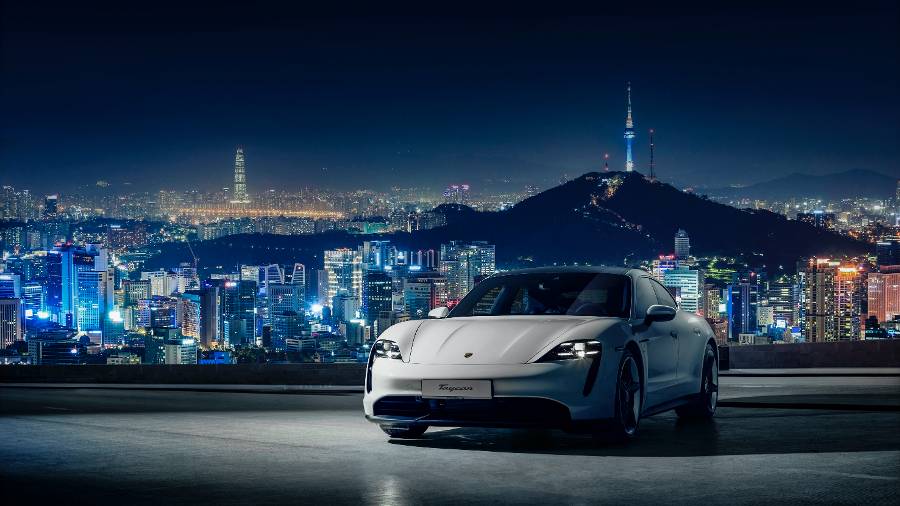
A saloon version (although some refer to it as a coupe, given the distinction between the two is less clearly defined than it used to be) and two estate versions: Sport Turismo and – with cladding and SUV crossover-inspired styling – Cross Turismo. We are focusing on the saloon/coupe version here, of which five variants exist.
The entry-level is called Taycan and has a single electric motor, rear-wheel drive and 408PS.
It gets LED headlights, eight-way electrically adjustable comfort front seats, dual-zone climate control, cruise control, a partial leather interior, 19-inch aero alloy wheels, an electric boot lid, adaptive dampers, a heat pump, three digital screens, Apple CarPlay, Android Auto, and a wireless phone charger.
The 4S is next and gets dual motors, 530PS, all-wheel drive, adaptive air suspension, and heated front seats.
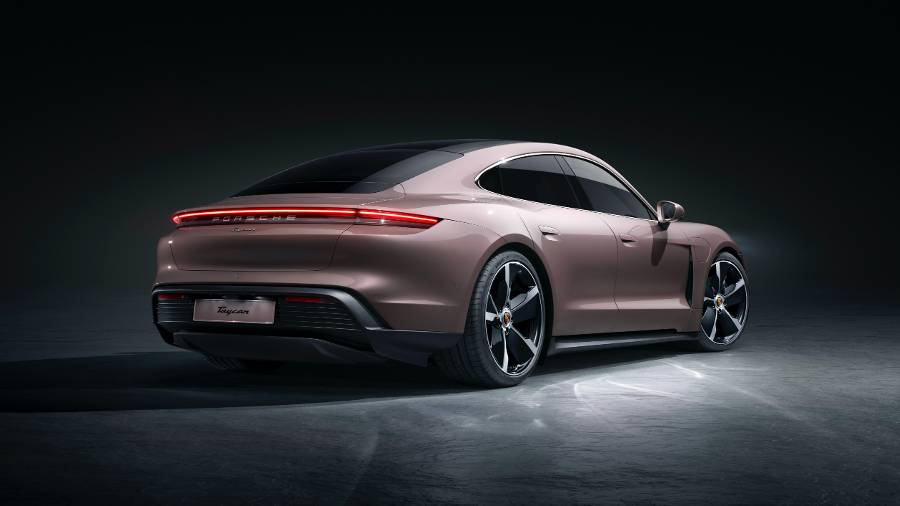
The GTS gets 598PS and adds sports seats.
The Turbo model gets 680PS, surface-coated brakes; matrix LED headlights, Turbo styling elements, 20-inch aero wheels, 14-way electric heated front comfort seats, a Bose surround sound system and an extended leather interior.
The top-of-the-range, existing Turbo S gets ceramic composite brakes, rear-axle steering with enhanced power steering, torque vectoring, 21-inch wheels, 18-way electric heated front adaptive sports seats and a sports chrono package. Oh. And 761PS. Yikes.
The new and updated Taycan Turbo S gets even more oomph arriving with power of 952PS as well as a 0-62mph acceleration time of just 2.4 seconds. And Porsche has unveiled an even more potent variant for 2024 - the Taycan Turbo GT (below) - which gets power of 1,100PS and a 2.2-second 0-62mph sprint time with the 'Weissach package' box ticked.
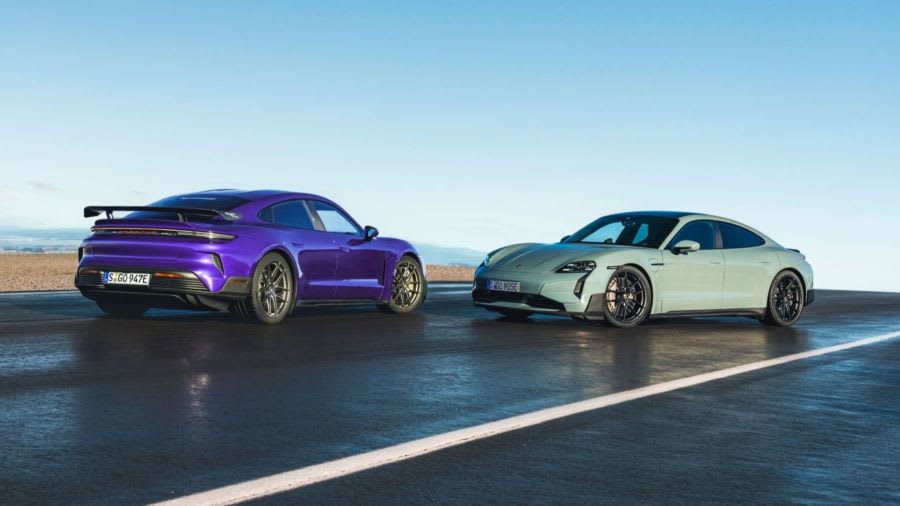
Range & Batteries
The range is complicated because it depends on your chosen model and whether you have the Performance Battery Plus pack.
It is an optional extra on the entry-level Taycan and the 4S, but it’s standard on the GTS and both Turbo models.
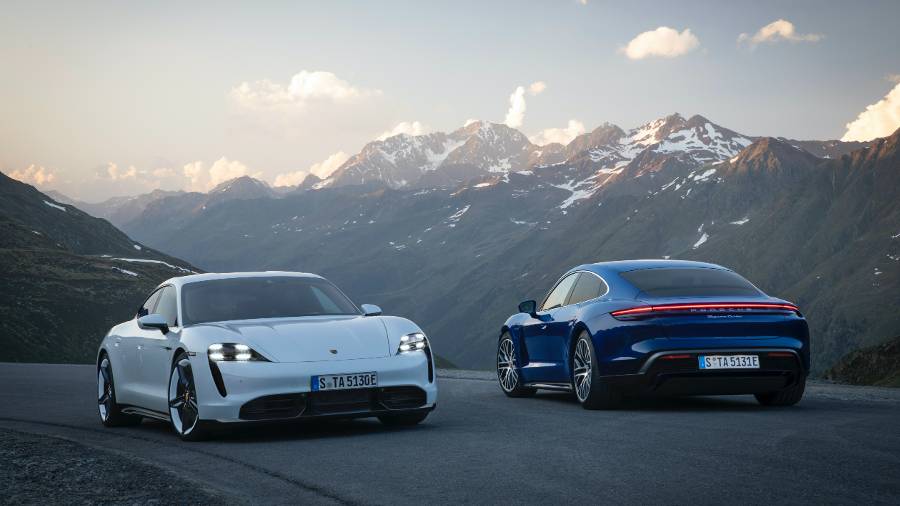
The standard battery is 79.2kWh and can manage 313 and 367 miles on a full charge, while the pack will get you a larger 93.4kWh battery, delivering 360 to 421 miles.
Unsurprisingly, the entry-level Taycan goes the furthest, while the Turbo S will need the most frequent replenishment of its batteries.
Of course, you'll struggle to achieve those figures in the real world, as the range is affected by many things, including driving style.
And, let's face it, you're not going to be leasing a Taycan to feather the throttle to maximise battery life, are you?

Performance & Drive
We are testing the mid-range GTS, which provides a lovely halfway house between the entry-level Taycan and the gut-wrenchingly fast Turbo S.
In case you're interested (and why wouldn't you be?), 0-62mph is dealt with in 5.1 seconds in the entry-level Taycan and a frankly ridiculous 2.6 seconds in the current Turbo S.
The GTS's 3.5 seconds, then, seems like a sensible compromise.
To say it's fast is a laughable understatement – the force is so great that your nose almost shunts to the back of your head!
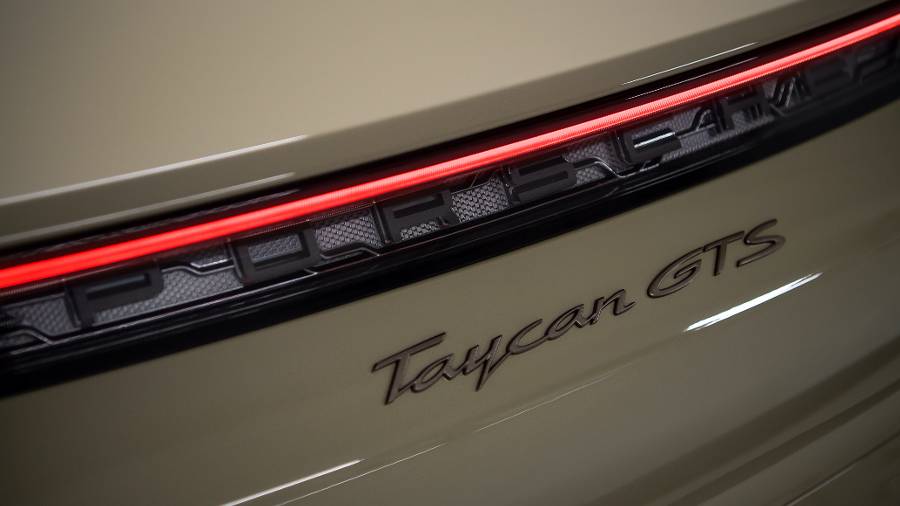
You are pinned back in your chair as you roar off (albeit silently, if that’s not a contradiction) from the line, and the car is up to motorway speeds in no time.
We can't see why you'd need the power of the Turbo, let alone the Turbo S, when the GTS is this capable.
However, acceleration is only half the game – and what Porsche drivers want to know is how it tackles a corner.
That is a tricky subject when it comes to electric cars, nearly all of which come with almightily heavy battery packs which completely ruin the handling, making otherwise agile vehicles feel wallowy in the bends.
Not so the Taycan.
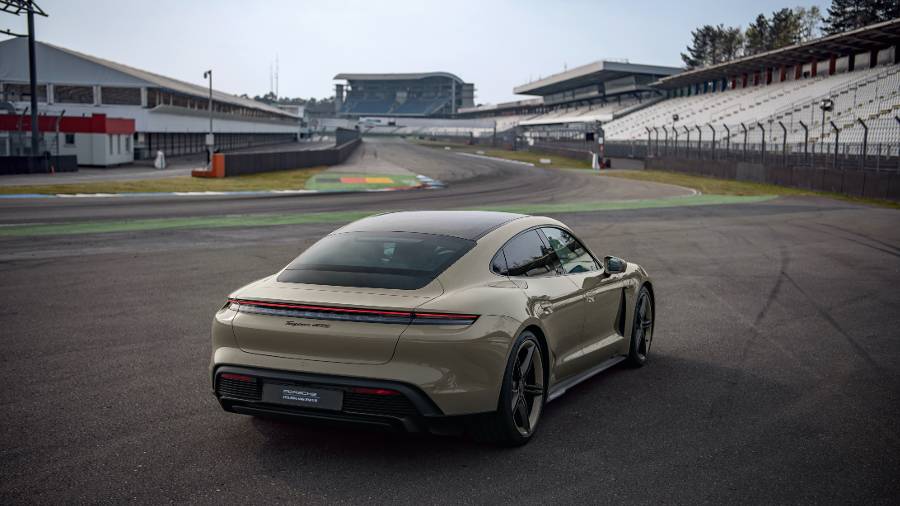
Quite how Porsche has done it remains a mystery, best explained as witchcraft.
It handles superbly – and doesn't feel weighed down by its batteries.
An ultra-low centre of gravity may provide part of the answer, as does using low-weight materials to counteract the sheer bulk of the batteries.
Nevertheless, we were astonished at how good the Taycan was at driving around corners, but for the lack of engine note, we'd swear it had a V8 under the bonnet.
The grip appears infinite (athough we’d caution you not to take that literally), feeling incredibly well planted, and body lean in the bends is almost non-existent.
In many electric cars, the steering lacks physical sensation, giving the impression that the wheel isn't connected to anything.
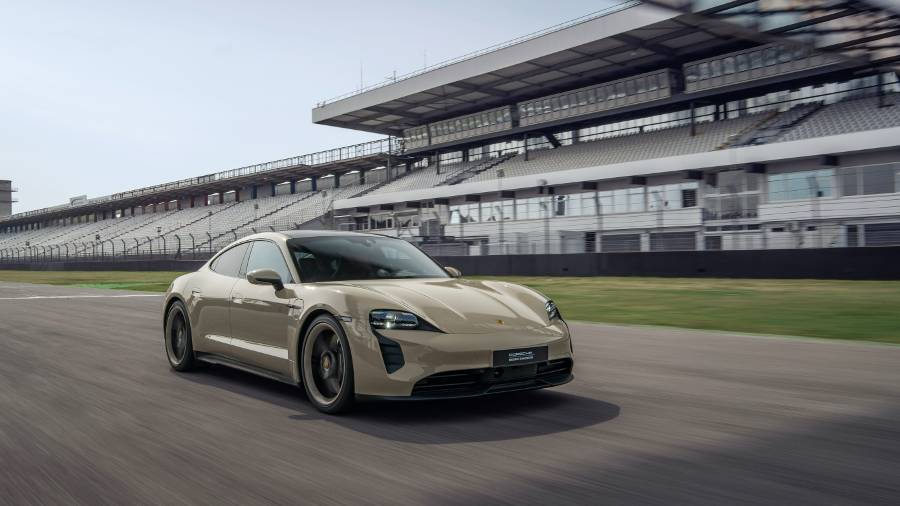
Porsche has done a great job with the wheel's feedback and precision, weighting up perfectly in the bends and placing the car exactly where you want to go.
As if that wasn't enough, dynamic chassis control is available as an optional extra, which improves the handling further, although we'd struggle to make a case for it, given how good the standard car is.
Despite the very keen handling, Porsche has also pulled off another near-miracle – it's still quite comfortable.
While the suspension can be adjusted on all models as standard, the ride is astoundingly absorbing for a vehicle of this type.
It soaks up potholes and ridges in the road surface easily and does this without ever feeling unbalanced or unsettled.
Getting any car to excel in handling and ride comfort is tricky, but it's nothing short of extraordinary in a vehicle like this.
The GTS we're focusing on is what we'd lease to get a good compromise between value-for-money and outright grunt, especially as you'll get the larger battery as standard.
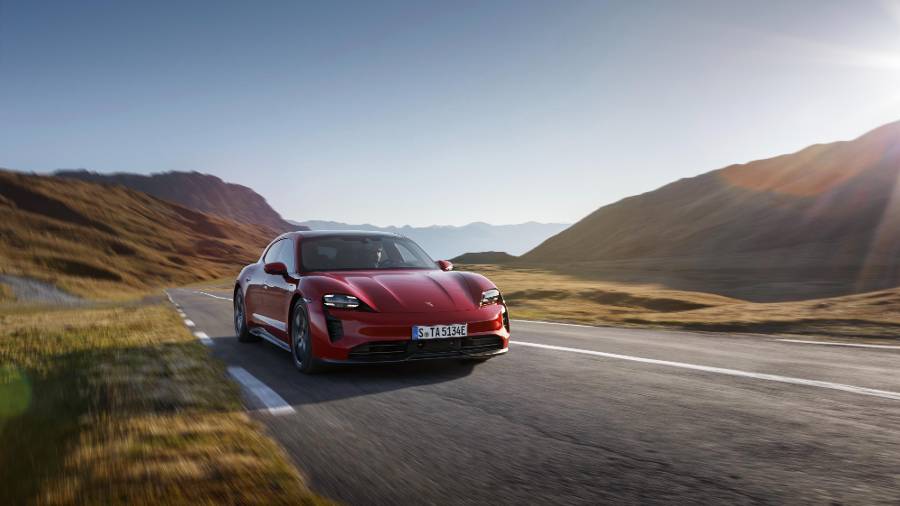
Running Costs & Emissions
No engine means no carbon emissions or petrol consumption, so that's taken care of immediately. Running costs will be very low compared with petrol or diesel cars, let alone a petroleum-powered Porsche.
The big win, though, is if you're after a company car, as electric vehicles command huge savings in Benefit In Kind tax. As a result, the low costs associated with a Taycan is a no-brainer if your employer provides it.
Regarding reliability, Porsche only has an average reputation, often coming around the middle of dependability league tables. However, given this is the only all-electric Porsche in the range, this could be a game-changer – but only time will tell.
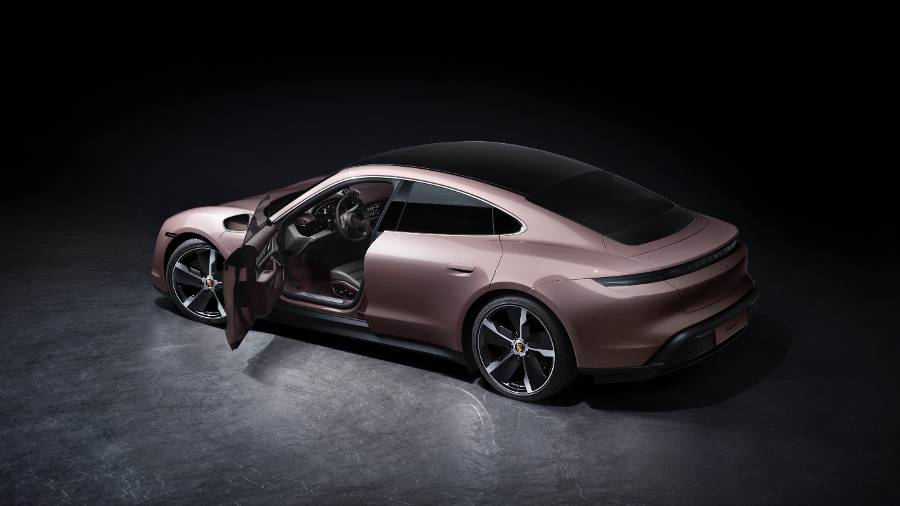
Interior & Technology
The Taycan’s interior is as eye-catching as the car’s on-road performance.
The steering wheel looks inviting to hold, and the whole interior layout is well thought out and designed with exceptional precision and build quality to match.
A large 10.9-inch infotainment screen is embedded in the dashboard, and an even bigger 16.8-inch curved digital instrument screen sits behind the wheel.
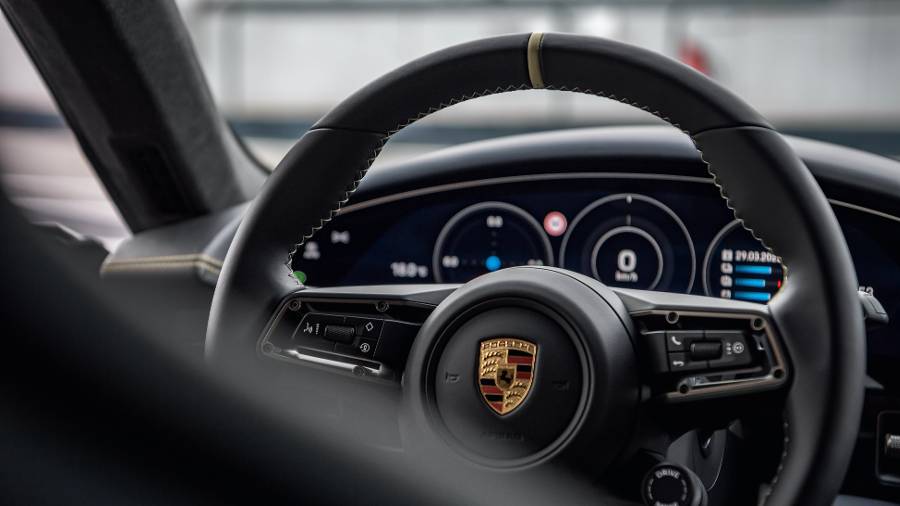
The latter can be customised to your heart's content, displaying helpful information, including the radio station or song you're listening to, SatNav directions and trip information, and the remaining range.
A third 8.4-inch screen sits in the diagonal floating centre console and adjusts many of the car’s other features, including the climate control.
It uses haptic feedback, which generates the feel of a button press on the touchscreen, even though there are no physical buttons.
It is commonly used on smartphones, and although it's better than nothing here, the lack of physical controls does make you more prone to pressing the wrong button.
Our car also includes an optional fourth screen for the front-seat passenger, who can adjust the entertainment or view various nuggets of information as desired.
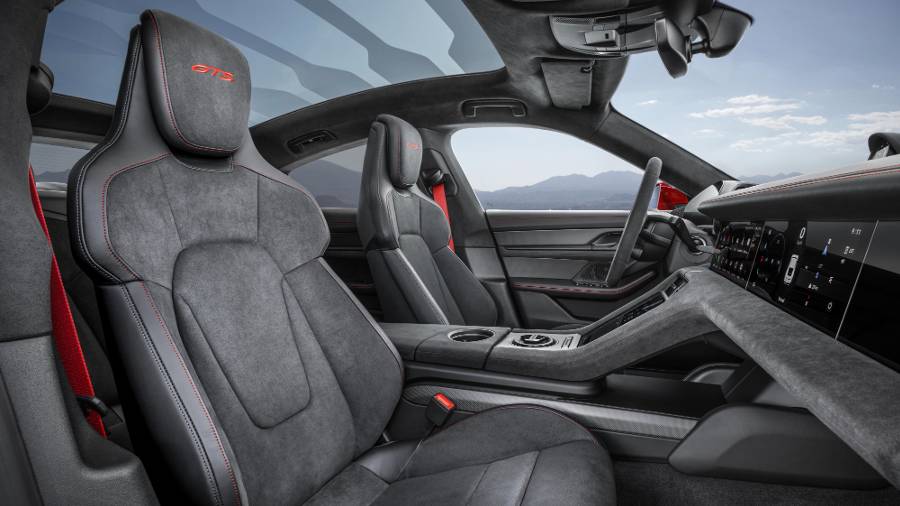
Charging
The charging speed is 225kW on the entry-level and 4S models with the standard battery.
However, another reason to upgrade to the larger battery pack (which, as we said, is included on the GTS and both Turbo models) is that the charging speed increases to 270kW.
The latter will enable you to get a 10 to 80% top-up in just 20 minutes, much quicker than nearly all of its rivals.
A 7.4kW home wall box will take around 14 hours to deliver a full charge from 0 to 100%.
The only drawback with the higher charging speed is that few charging outlets can manage such rapidity now, although national infrastructure constantly improves.
battery.
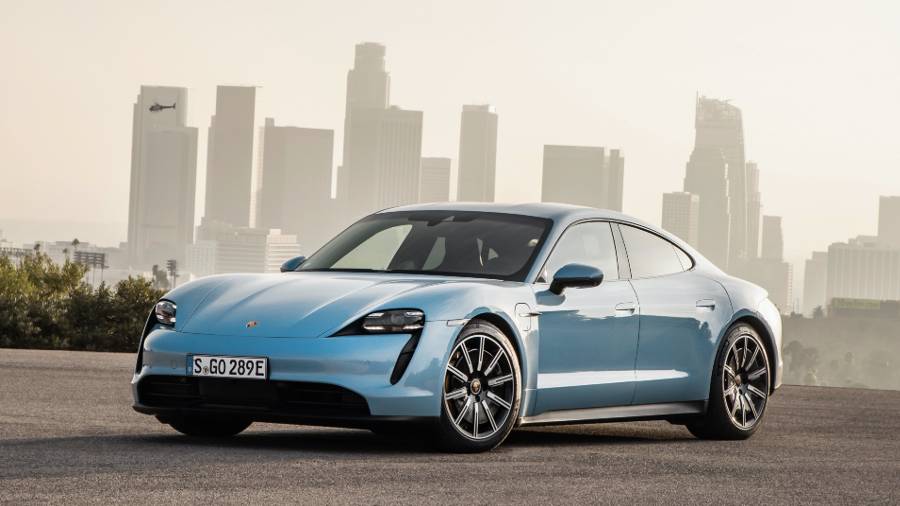
Space & Practicality
Despite it being roomier than a Porsche 911, the Taycan still doesn’t seem like a car that’s especially practical when viewed from the outside.
But, as per what we've experienced so far, Porsche has maximised its effectiveness in making things as accommodating as possible.
The driving position is precisely what you'd expect from a Porsche – low to the ground and giving you a natural feeling of driving a sports car, just in a hushed manner.
The drawback of the low driving position is that the view is restricted, not helped by the reasonably thick front pillars.
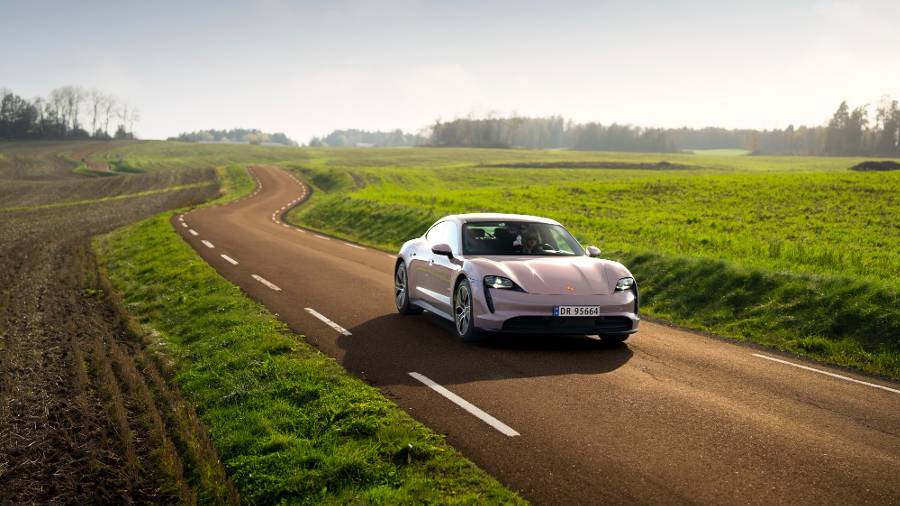
It can be a real problem at the back, as an aggressively sloping roofline and thick rear pillars heavily hamper the rearward view.
Happily, a rear-view camera and front and rear parking sensors are standard.
There is plenty of space in the front, so you don't feel claustrophobic. But you also feel close enough to everything to create the cocooned environment that makes sports cars so immersive.
In the rear, it's less generous than its foes – but most of its rivals aren't trying to be sports cars, even if they have athletic characteristics.
That said, given the Taycan’s shape, two adults will still feel reasonably comfortable in the rear, although if you’re over six feet, you’ll likely be a tad cramped.
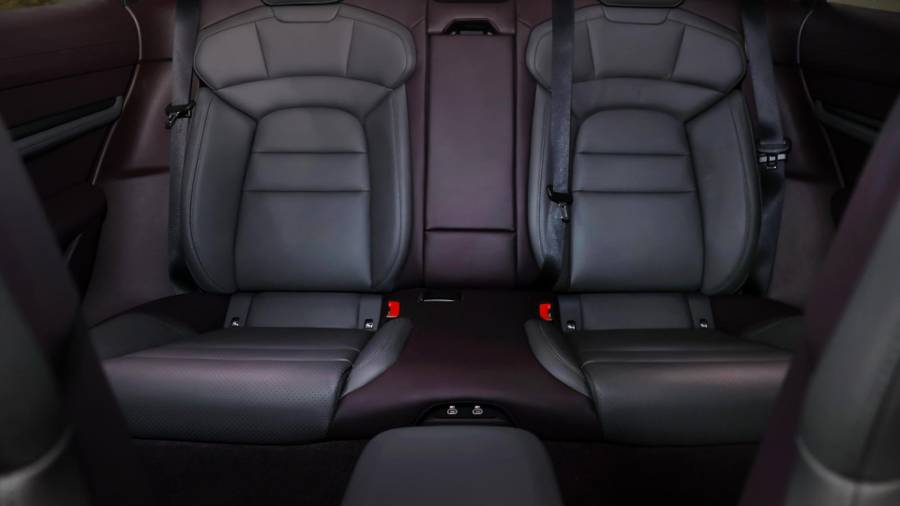
A third rear seat is optional, but we'd only go for this if you need five seats in the car.
Those who find it lacking boot space can opt for the Turismo estate versions of the Taycan, which we mentioned earlier.
That said, you may be surprised by what you can fit inside, as it'll swallow up to 366 litres of cargo, which is slightly more than a Mercedes-Benz A-Class or a Mazda 3 and not far behind a BMW 2-Series.
The Taycan's rear seats fold down in a 60/40 split, although opting for the three rear seats means they'll fold individually in a more versatile 40/20/40 configuration, which may make this option worth considering.
Porsche doesn't provide an official figure for the increased boot space with the rear seats down, but it's something in the region of 1,000 litres, and there's even more space under the boot floor to keep charging cables.
It also has a small 81-litre 'frunk' (front trunk/boot), so you can cram the odd bag or two underneath the bonnet.
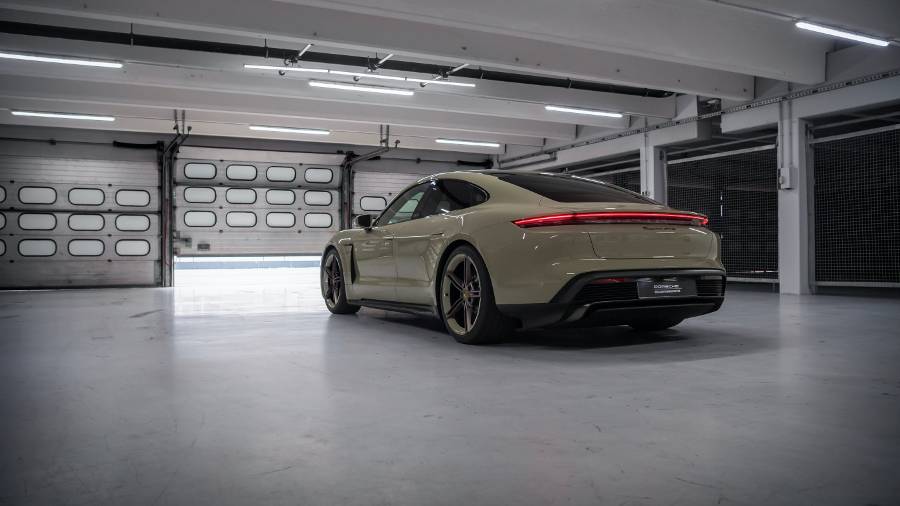
Safety
Euro NCAP crash-tested a Taycan in 2019, when it earned a five-star rating, including scores of 85% for adults, 83% for children and 73% for safety assists.
Automatic emergency braking, traffic sign recognition, RECAS (rear-end collision alert system), swerve assist, and junction assist are just a handful of the safety features.
However, standard equipment can depend on which version of the Taycan you choose, while some of the car’s best features are optional extras.
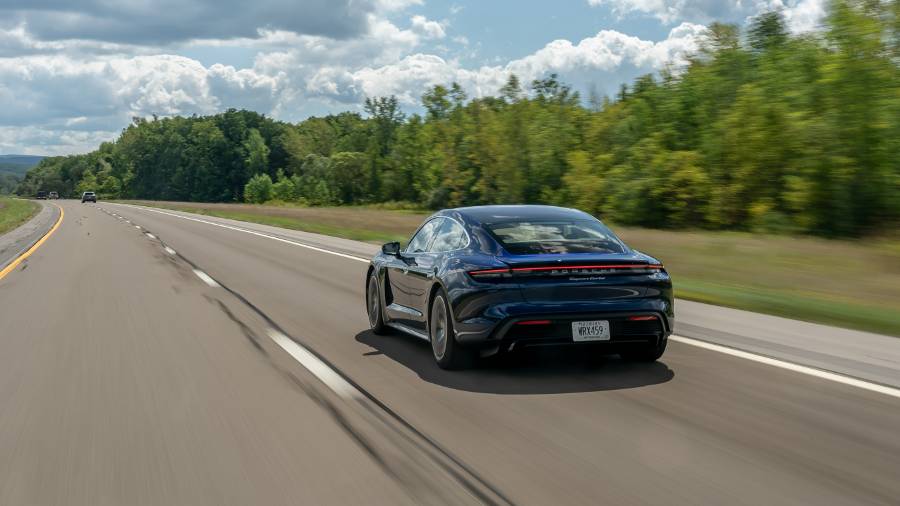
Options
If you're familiar with Porsches, you'll know that everything is customisable, so the list of options is endless.
It is worth noting that keyless entry, soft-close doors, radar-guided cruise control, a 360-degree camera, blind spot monitoring, and a full-leather interior are among the features only available if you're willing to pay extra.
Several of the car's optional safety features, such as lane change assist and active lane keeping, are expensive and must be bought individually.
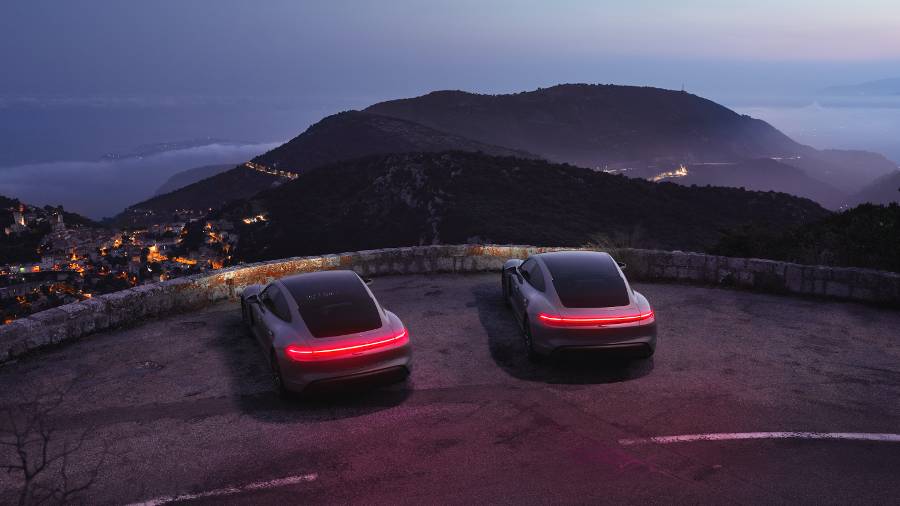
Rival Cars
Unless you’re a multi-millionaire, there are very few all-electric sports cars – and certainly none that can directly match the Taycan – yet.
The closest rival to the Porsche Taycan is the Audi e-Tron GT – both based on the same platform.
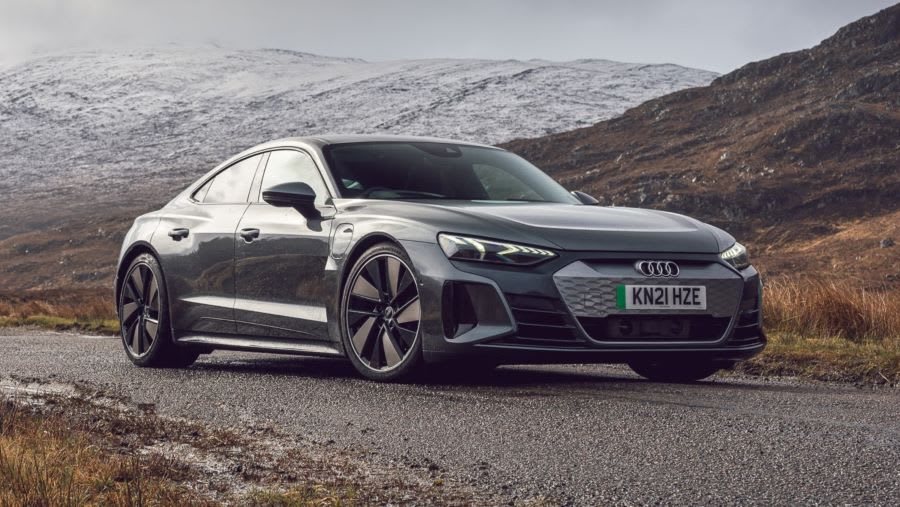
If the Taycan's lease price is challenging, it's worth looking at the Audi instead, although it's hardly cheap.
The new Tesla Roadster could be a good alternative if you're looking at sports cars.
Mercedes-Benz has its EQE, while Audi has a wide selection of more practical electric vehicles if the lack of space in the Taycan is a problem.
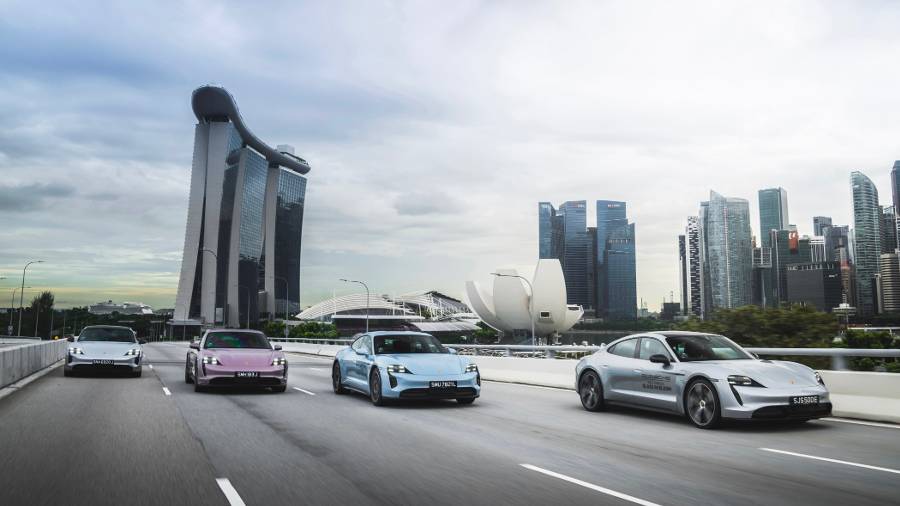
Verdict & Next Steps
Overall, the Porsche Taycan is in a class of its own and is, without doubt, the current front-runner regarding the driving experience for an electric car.
On top of that, it has an interior that will meet or exceed Audi's, and for a small car, it's reasonably practical.
The GTS version we focused on is our pick, offering the best compromise between outright performance and value for money.
Nevertheless, even this mid-range model is significantly more expensive than the entry-level Taycan and the next model up, the 4S.
Although we’d recommend the 4S as a minimum, there’s no shame in the base model, which includes much of the fun for the lowest outlay.
If you need more practicality, the Turismo versions are offered, too, although if you want 90% of the same for less, the Audi e-Tron GT is the biggest thorn in the Taycan’s side.
.jpg)
Where to next?
View latest Porsche Taycan lease deals - from just £1,104 per month inc VAT**.
Call us on 0118 3048 688 or hit the green 'Enquire' button for more details.
Looking for a great leasing deal? Check out our incredible range of Special Offers and Lease Deals.
New saloon? Read our latest Reviews and find the right model for you.
Want to know more about leasing? Take a look at our comprehensive Leasing Guides.
Interested in everything motoring? Why not catch up on all the latest Car Leasing News.
**Score based on Select’s unique meta score analysis, taking into account the UK’s top leading independent car website reviews of the Porsche Taycan
**Correct as of 08/04/2024. Based on 9 months initial payment, 5,000 miles annually, over a 48 month lease. Initial payment equivalent to 9 monthly payments, or £9,935.64 (Plus admin fee) Ts and Cs apply. Credit is subject to status.





















